Skip to contentSkip to primary sidebarSkip to footer
Menu
Pau d’Arco – Health Benefits and Side Effects
Botanical Name: Tabebuia impetiginosa, Tabebuia avellanedae, Tabelbuia heptaphylla.
Other Common Names: Tabebuia ipê, ipê, ipê roxo, lapacho, tahuari, taheebo tree, tabebuia avellaneae, trumpet tree, ipê-contra-sarna, tajy.
Habitat: Pau d’arco is found throughout the rainforests of Central and South America, although it may be harvested as far north as southern Florida.
Plant Description: There are about a hundred species of this large tropical tree. It is a broad-leafed evergreen that may grow to 150 feet in height, and six feet in diameter.
Some species produce large, white flowers, while Tebebuia impetiginosa produces purple or pink flowers.
Plant Parts Used: Heartwood and bark.
 Pau d’Arco Benefits and Uses – ©The Herbal Resource
Pau d’Arco Benefits and Uses – ©The Herbal Resource
Therapeutic Uses, Benefits and Claims of Pau d’Arco
Pau d’arco contains alkaloids, quercetin, napthaquinones, anthraquinones, and flavonoids.
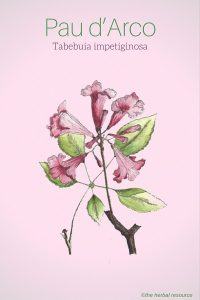 Pau d’Arco (Tabebuia impetiginosa) – Illustration ©the herbal resourceLapachol, one of the naphthaquinones, has been found to be effective against malaria and some types of tumor cells in studies with laboratory animals.
Pau d’Arco (Tabebuia impetiginosa) – Illustration ©the herbal resourceLapachol, one of the naphthaquinones, has been found to be effective against malaria and some types of tumor cells in studies with laboratory animals.
The heartwood of Tabebuia aqvellaneda contains napthaquinones and significant amounts of quercetin, which are thought to stimulate the immune system, cleanse the body and stimulate the production of red blood cells.
Most pau d’arco products are not standardized, and there is considerable variation in the active compounds found in the tree, depending on the species.
A number of species of pau d’arco are sold as herbal remedies, which may in part account for the variance in their effectiveness and quality. Most of the research has been done on the wood but at this time little research has been done on health properties of the bark.
Pau d’arco is considered to be analgesic, antioxidant, antiparasitic, antimicrobial, antiviral, astringent, anti-inflammatory, antibacterial, antifungal, and laxative.
It is thought to have anti-cancerous properties.
Pau d’arco has a long history as an important traditional herbal remedy among the ancient Incas and natives of the South American rain forests as a tonic to strengthen the body and improve overall health.
Traditional folk healers of the Caribbean use the leaves and bark to treat wounds, backache, toothache, and snakebite.
Indigenous people traditionally used pau d’arco as a treatment for malaria, colitis, respiratory problems, colds,cough, flu, fever, cancer, lupus, infectious diseases, inflammation of the prostate gland, sexually transmitted diseases, boils and ulcers.
Pau d’arco is used as a natural remedy for high blood pressure, poor circulation, and anemia, and is thought to protect against cardiovascular disease.
Tabebuia avellanedae is used as a natural remedy to relieve pain, and as a treatment for arthritis andrheumatism.
In the herbal medicine systems of the United States and Europe, the herb has been used as an herbal remedy for psoriasis, liver disease, Hodgkin’s disease, osteomyelitis, Parkinson’s disease and allergies.
Pau d’arco is a popular herbal remedy for yeast infections or candida.
A decoction of the herb has also been used as a topicaltreatment for athlete’s foot, nail fungus and skin fungi.
The boiled bark is used as a poultice or wash to treat skin inflammations, fungal infections, hemorrhoids, eczemaand wounds.
Pau d’arco and its chemical constituents have demonstrated in vitro antiviral properties against, among others, Herpes I and II, influenza, poliovirus, and vesicular stomatitis virus.
 Pau D Arco Inner Bark Extract – 100 Vegicaps by Dr. Christophers Formulas
Pau D Arco Inner Bark Extract – 100 Vegicaps by Dr. Christophers Formulas
Dosage and Administration:
Capsules: 300 -500 mg three times per day.
Tincture (1:5): 0.5 – 1 mL (about 1/8 – ¼ tsp.) two or three times per day.
Decoction: Simmer the dried bark or heartwood for at least 8 minutes and drink one-half to one cupful 2-4 times daily.
Do not prepare as an infusion/tea (that is, steeped without boiling), as the components do not release easily into water.
Pau d’arco is also available as a salve for topical application.
 Pau d’Arco Flowers (Tabebuia impetiginosa)
Pau d’Arco Flowers (Tabebuia impetiginosa)
Potential Side Effects of Pau d’Arco
At recommended dosages, side effects from pau d’arco are uncommon but may include anemia, nausea, diarrhea, and dizziness.
Large amounts of the herb can be toxic and produce some potentially serious side effects.
Pregnant and nursing mothers should not take pau d’arco. It should not be given to infants or children.
When taken by mouth, pau d’arco can interact with antiplatelet and anticoagulant drugs, aspirin or other blood-thinning medications such as Warfarin (Coumadin), or Clopidogrel (Plavix), leading to an increased risk of bleeding. It may increase the risk of bleeding in those with hemophilia or other clotting disorders.
The bark of pau d’arco can sensitize the skin and has caused asthma where people have been exposed to the wood dust. Allergic reactions are also a possibility.
353
Reader Interactions
Comments
Mary says
Pau d’ Arco is a very good supplement that actually treats various conditions effectively. Follow the dosage and buy quality brands you trust.
Trevor says
I had the worst allergic reaction to it in my life.
However, I did take too much for 3 days.
Leave a Reply
Your email address will not be published. Required fields are marked *
Comment
Name *
Email *
Website
Primary Sidebar
ENJOYING THIS CONTENT?
If so then subscribe to the mailing list and get updates to your email inbox.
we respect your privacy and take protecting it seriously
RECENT ARTICLES
Growing Herbs to Harvest Their Essential Oils
5 Health Benefits of Parsley Juice
4 Recipes with Avocado Oil for Gorgeous Skin
7 Best Home Remedies for Dry Skin
Ananas Comosus: The History of Pineapple And How It Got Its Name
FOLLOW ON FACEBOOK
HERBS FOR COMMON AILMENTS
Herbal Remedies for Constipation
Medicinal Herbs for Hepatitis
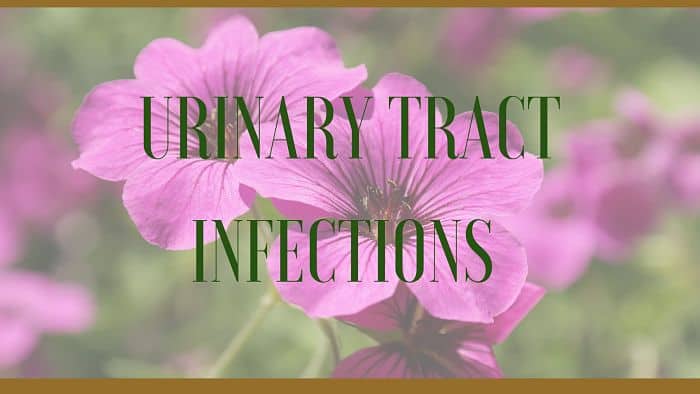 Herbal Remedies for Urinary Tract Infections (UTI)
Herbal Remedies for Urinary Tract Infections (UTI)
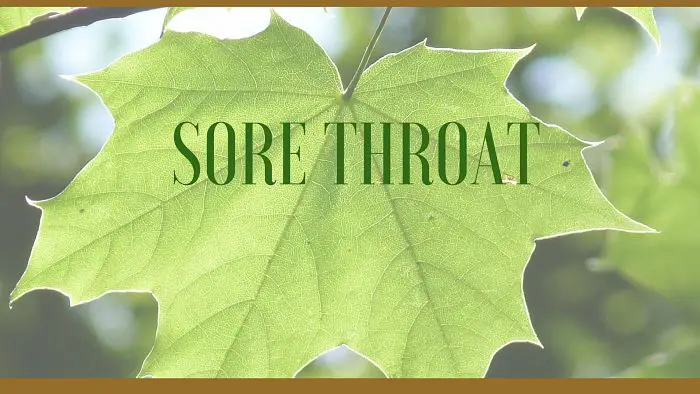 Herbal Remedies for Sore Throat
Herbal Remedies for Sore Throat
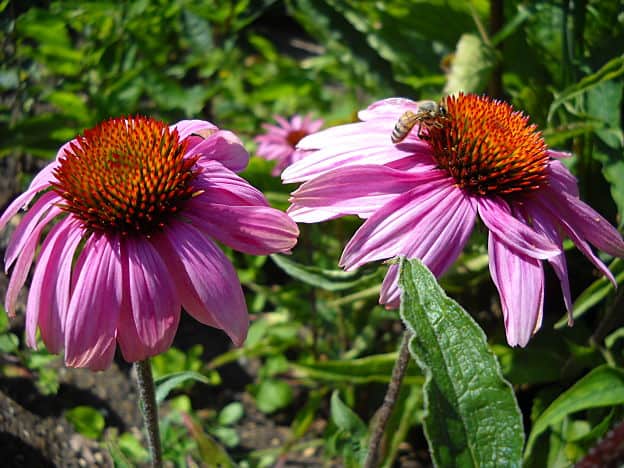 Medicinal Herbs for the Flu (Influenza) Relief
Medicinal Herbs for the Flu (Influenza) Relief
HERBAL RESOURCE ON PINTEREST
The Herbal ResourceFollow On
Search this website
Footer
FOLLOW ON
CATEGORIES
CategoriesSelect CategoryGrow Your Own HerbsHerbs – GeneralHerbs – InfographicsHerbs – Scientific EvidenceHerbs for Specific AilmentsMedicinal Herb ProfilesPlants in the NewsPoisonous PlantsUncategorized
The Man Behind the SiteContact MePrivacy PolicyTerms of Use
AMAZON AFFILIATE DISCLOSURE STATEMENT
The Herbal Resource is a participant in the Amazon Services LLC Associates Program, an affiliate advertising program designed to provide a means for sites to earn advertising fees by advertising and linking to amazon.com.
DISCLAIMER
The information on The Herbal Resource is not intended to diagnose, treat, cure or prevent any disease.
The information is for informational purposes only and is not intended to be a substitute for informed medical advice or care.
You should not use this information to diagnose or treat any health problems or illnesses without consulting your doctor.
COPYRIGHT © 2018 · THE HERBAL RESOURCE


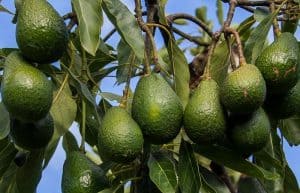


沒有留言:
張貼留言